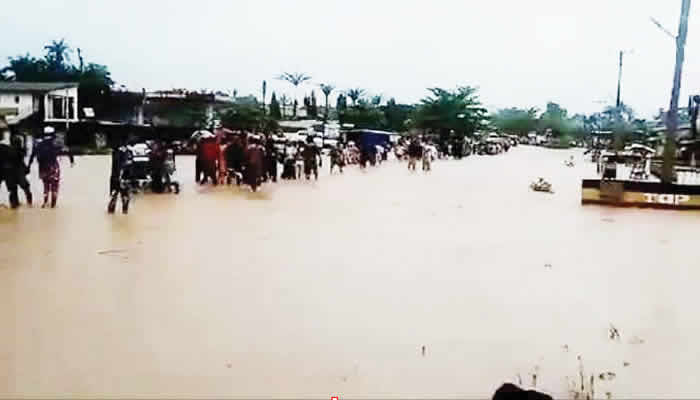A serious flood alert has been issued by the Nigerian Meteorological Agency (NiMet) for July 2025, warning that 20 states, including Lagos, Benue, Edo, and Sokoto, are at risk of flash floods. This alert comes amid public concern over the poor handling of ecological funds across the country. Despite over ₦620 billion being disbursed to states over the past 14 years, flood disasters remain a recurring nightmare in many communities.
In Ondo State, several towns in Owo, Okitipupa, Ilaje, and Ese Odo local governments were recently submerged following heavy rainfall that lasted days. Properties worth millions were destroyed in communities like Uso, Ayeka, Ikoya, and Igbotako. Victims and community leaders are now appealing to the government for immediate assistance, saying they’ve been left stranded by a system that promised support but failed to deliver when it mattered most.
NiMet’s forecast reveals that states such as Zamfara, Kaduna, Yobe, Ogun, Ondo, Delta, and Akwa Ibom also face serious flood threats this month. Residents are advised to take precautionary measures such as clearing drainage systems, preparing emergency kits, and shutting off electricity and gas during storms. Still, many citizens question how such disasters continue when huge amounts of money have already been allocated to address them.
Between 2012 and February 2025, the federal government distributed over ₦620 billion in ecological funds to all 36 states. The funds, created to solve environmental issues like flooding and erosion, are managed by the Ecological Fund Office under the Secretary to the Government of the Federation. However, the lack of transparency and accountability has led to fears that the money may not be getting to where it’s needed most. In January 2025 alone, ₦6.03 billion was shared, with Kano, Lagos, and Borno states receiving the highest allocations. Yet, many of these states remain unprepared for emergencies.
A report by SBM Intelligence shows that since July 2024, floods have affected 31 states and displaced about 1.2 million people. Around 180,000 hectares of farmland have also been destroyed, worsening food insecurity and pushing inflation further. In Niger State, recent floods in Mokwa claimed lives and property, with local leaders calling for urgent help from both federal and state authorities.
Experts have described the situation as a failure in governance. They argue that while billions have been spent, the impact remains invisible. Issues such as poor urban planning, weak enforcement of environmental laws, uncompleted flood control projects, and a lack of drainage systems continue to put lives at risk. Some pointed to the abandoned River Niger flood control project and the delayed construction of buffer dams in Adamawa and Taraba, originally meant to reduce flooding caused by water releases from Cameroon’s Lagdo Dam.
According to StatiSense data for May 2025, over 116,000 people were affected by floods across 12 states. Zamfara was the worst hit with more than 58,000 victims, followed by Kwara, Lagos, Enugu, and Bayelsa. In Lagos, flood issues persist due to poor drainage and unchecked building in flood-prone areas. In the north and Niger Delta, rising rivers and erosion are major contributors.
Environmental experts are now calling for independent audits of ecological spending, stronger climate adaptation strategies, and more community-driven planning. They say it’s not just about funding, but also about political will, data-backed decision-making, and truly involving the people most affected.





